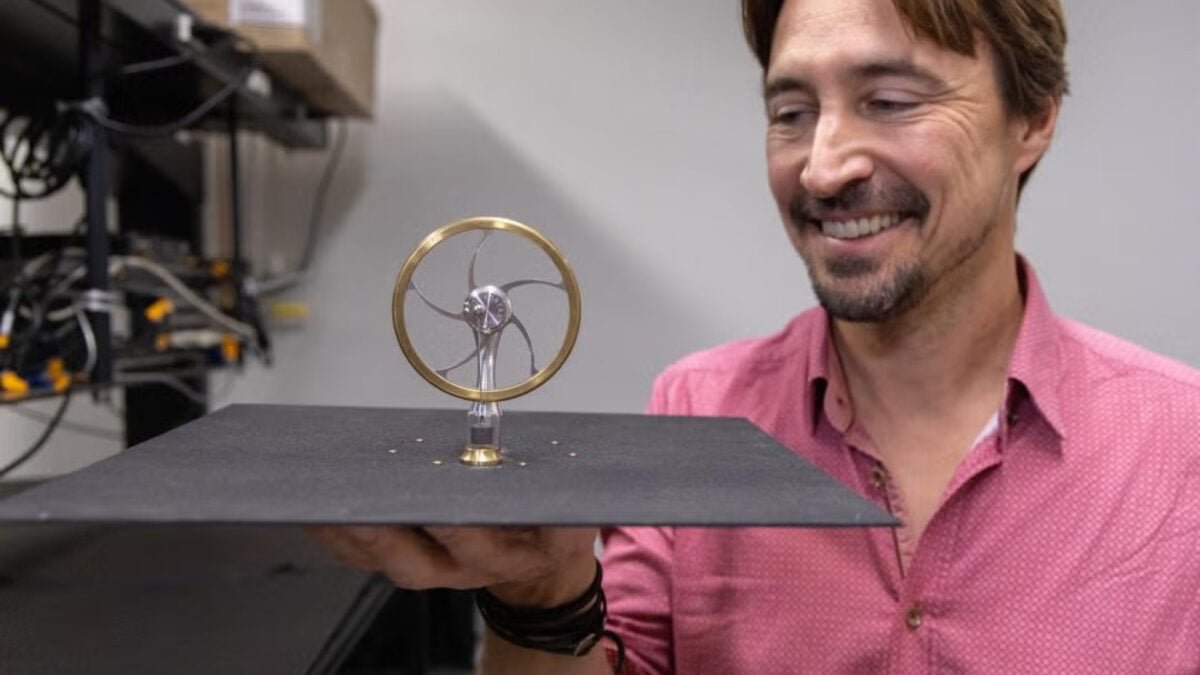Deep space may provide hidden sources of energy, such as dark matter, to fuel future spacecraft. However, before we reach that stage, a new experimental engine suggests it may already be possible to tap into deep space as a potential energy source – albeit on a small scale that probably wouldn’t support interstellar travel.
Actually, the new engine, described in a Science Advances paper published Nov. 12, is aimed much less ambitious — but it’s still a significant step forward. So far, its primary purpose is to ventilate greenhouses and other buildings. This simple device, known as a Stirling engine, converts heat differences into mechanical energy.
However, what is special about this particular engine is that it utilizes the depth of space to provide the required cooling. The “hot” part is natural heat on Earth, while the “cold” part is “very, very cold but very far away: deep space,” the team of two engineers from the University of California, Davis, explained in a statement.
“It doesn’t actually need to physically touch space; it can only interact radiatively with space,” Jeremy Munday, senior author of the study, said in the release.
But how does that even work?
First, consider how Stirling engines work. Unlike many other engines, Stirling engines are surprisingly efficient when “there are only small temperature differences…such as between a hot cup of coffee and the temperature around it,” Munday explained. He said the main thing is to ensure that the hot and cold parts of the engine are clearly separated.
Only a simple modification was required to create the new engine. Munday and his co-author and graduate student, Tristan Deppe, created a simple panel to serve as a heat-radiating antenna. They then mounted a commercially available Stirling engine on a square antenna, which was ultimately slightly larger than a laptop.

Simply, the ground-facing portion was attached to the soil with aluminum mounts to ensure it could absorb heat from the Earth’s surface, according to the paper. The side facing the night sky, on the other hand, was covered with a special type of paint, which enabled it to capture infrared radiation from deep space and the Sun.
“The reason it’s different from any other technology is because a lot of engines work on temperature differences, but typically things that are close to each other,” Munde said in a video introducing the engine. “For us, we have the warm Earth nearby, but the cold of space is very, very far away. And the leap we’ve made is that, even if these things are separated very far, we can connect them radiatively.”
Small Engine, Cosmic Power
Over a year, Munday and Deppe set aside a piece of land to test their device outside the laboratory. They found that after sunset, their setup produced about an 18-degree Fahrenheit (10-degree Celsius) temperature difference across the two sides of their square antenna.
According to the paper, this was enough of a heat gradient to generate at least 400 milliwatts of mechanical power per square meter – enough energy to directly power a fan and a small electric motor.
However, for the researchers, the most promising experiment was one they conducted inside a small greenhouse. For this test, they replaced the engine’s flywheel with a custom fan blade and monitored whether the setup could help ventilate the greenhouse at night.
To their surprise, they found that the fan provided enough airflow to regulate the greenhouse’s temperature. Since this is only the first prototype, continued improvement and expansion of the technology “could provide a completely passive way of ensuring healthy breathable air in public spaces and promoting plant growth by regulating humidity and CO2 levels in greenhouses and growhouses,” the paper says.
UC Davis has filed a provisional patent for the design, according to the release.
